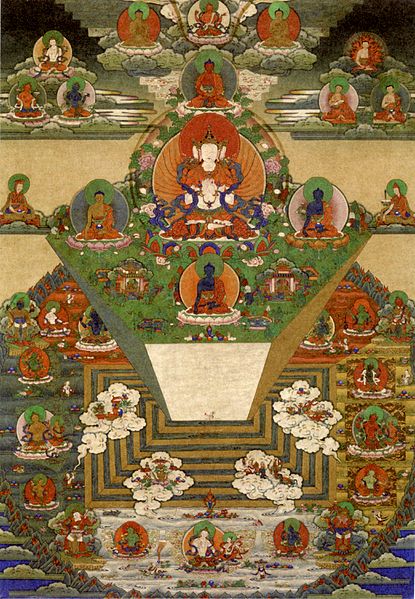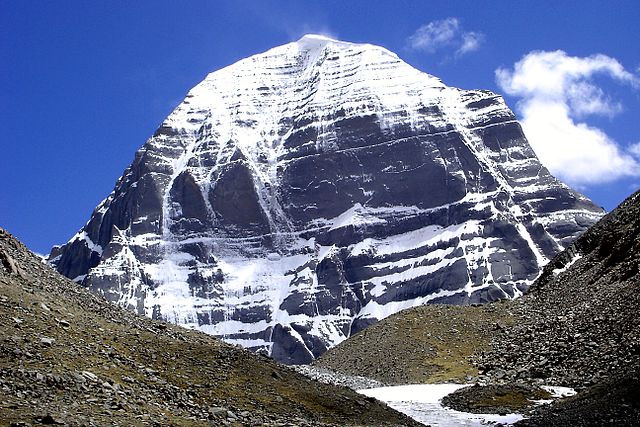Mount Meru, also known as Sumeru, Sineru, or Mahāmeru, is the sacred five-peaked mountain of Hindu, Jain, and Buddhist cosmology and is considered to be the centre of all the physical, metaphysical, and spiritual universes. The mountain is also mentioned in some scriptures of non-Indian based religions such as Taoism, which was influenced by the arrival of Buddhism in China. There is no clear identification of Mount Meru with a particular geophysical location but it is always located in Himalayan or Aravali ranges.
Bhutanese thangka of Mount Meru and the Buddhist universe, 19th century, Trongsa Dzong, Trongsa, Bhutan.
Yuan dynasty 1271–1368) Chinese mandala depicting Mount Meru as an inverted pyramid topped by a lotus.
Tibetan Cakrasaṃvara sand mandala with Mount Meru in the centre.
A mural depicting Mt. Meru, in Wat Sakhet, Bangkok, Thailand.
Sacred mountains are central to certain religions, and are usually the subjects of many legends. For many, the most symbolic aspect of a mountain is the peak because it is believed that it is closest to heaven or other religious realms. Many religions have traditions centered on sacred mountains, which either are or were considered holy or are related to famous events. In some cases, the sacred mountain is purely mythical, like the Hara Berezaiti in Zoroastrianism. Mount Kailash is believed to be the abode of the deities Shiva and Parvati, and is considered sacred in four religions: Hinduism, Bon, Buddhism, and Jainism. Volcanoes, such as Mount Etna in Italy, were also considered sacred, Mount Etna being believed to have been the home of Vulcan, the Roman god of fire and the forge.
The north face of Mount Kailash, a mountain in the Tibet Autonomous Region of China which is considered sacred by four religions.
Machapuchare, a sacred Nepalese mountain, viewed from foothills
Mount Olympus
Mount Athos








